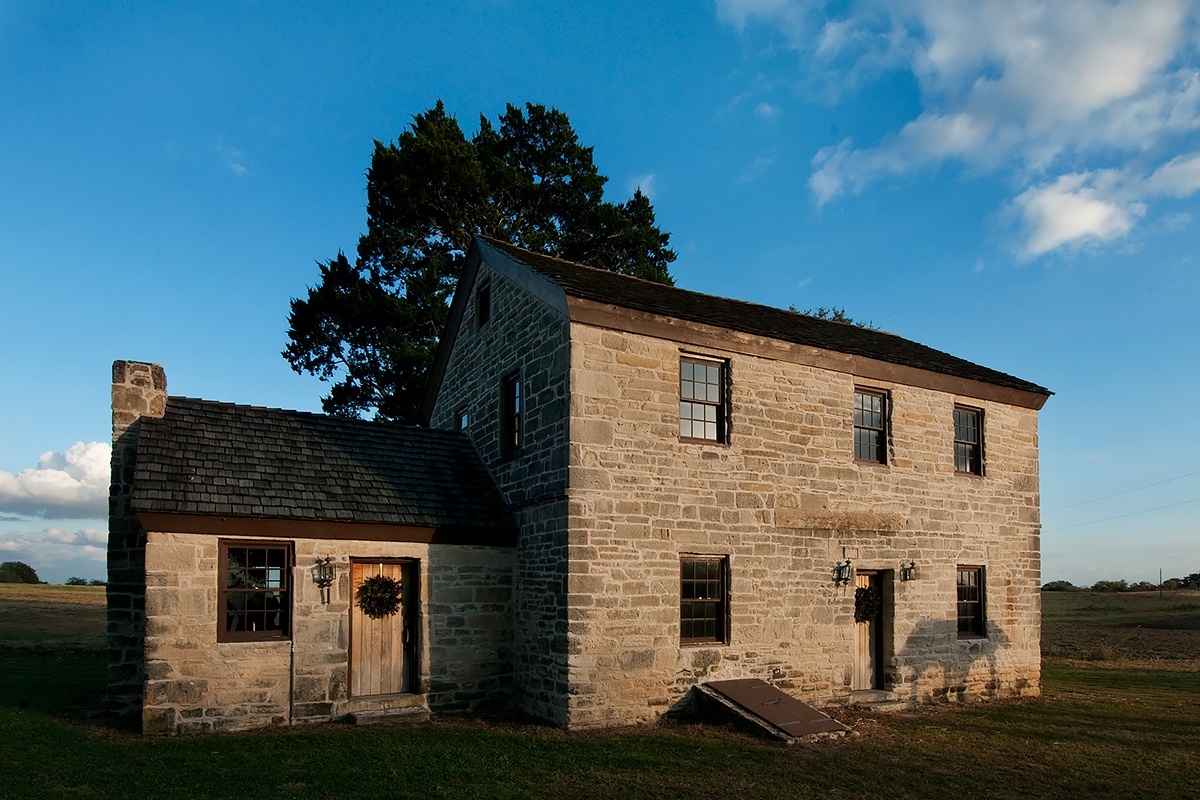Early settlers often made great sacrifices to get to Texas. That’s certainly the case with Valentine Hoch, the German namesake of the DeWitt County hamlet of Hochheim.
Most of DeWitt County is in the Guadalupe Valley Electric Cooperative service territory.
The stories about Hoch’s trek to Texas and subsequent settlement on the coastal plains vary slightly, but all accounts agree that shortly before Hoch and his wife, Margarethe, sailed for the New World in 1845, one of their children died. According to an account by Hoch’s great-granddaughter, Mildred Allen Duhon, another child died during the voyage and was buried at sea. Heartsick, Margarethe herself died shortly after the family landed at the Texas port of Indianola. Hoch buried her in a wooden coffin that he built himself.
Duhon described her ancestor as a stonemason and a nail smithy, mechanic, baker, lay minister for the Lutheran church and, by necessity, a farmer and tender of livestock. Great-grandson H.R. Hoch told the Houston Post in 1964 that the Lutheran minister immigrated to Texas to escape religious oppression. Hoch purchased land in Texas from an agent who was visiting Europe on a mission to entice settlers. Instead of proceeding to this land, Hoch and other Germans followed trails inland to nearby territory that would become DeWitt County in 1846. Hoch and his surviving children stayed with others from the Old Country in another DeWitt County settlement called Concrete.
Hoch purchased land near the Guadalupe River. Working with another immigrant mason, Augustus Weig, he began building a home that still stands today along U.S. Highway 183. They quarried sandstone in the Guadalupe River valley and hauled it to Hoch’s land on a slide hitched to “an old gray horse” he had acquired in Indianola.
In 1854, Hoch heard about a widow in Indianola named Johanna Fleming and went to visit her. She had immigrated from Germany with her husband after losing three children to diphtheria, according to an account provided in 1932 by her son. Another baby died at sea and then, after landing with four children, Johanna’s husband died of yellow fever, and she lost still another child. She was struggling to survive as a single mother with three young children when Hoch came courting.
Their combined family grew to 10 children, and Hoch continued to labor on the rock house. Girls occupied the second floor, and boys slept in the attic. Inscriptions dated 1856, 1857 and 1866 indicate completion dates for sections of the 2 1/2-story home. Lime mortar for the stones was made by burning stacked layers of wood and sandstone. Hoch made lath for interior walls by twisting willow sticks and walnut shoots with mortar, mud and moss. For wall plaster, he mixed pulverized limestone with sand, fine gravel and ashes. Hoch fastened the hand-hewn timber rafters with wooden pegs.
In 1857, the Hoch residence became a stagecoach stop on the Austin-to-Indianola road. As more folks settled nearby, Hochheim grew into a thriving trade center. By 1895, the town had two general stores, a hardware store, saddler, blacksmith, saloon, drug store and hotel.
Today, the only survivor of those structures is Hoch’s stage stop. A 1950s restoration by then-owners Ross and Lucille Boothe of Gonzales received an award from the San Antonio Conservation Society. The Boothes hosted several hundred Hoch descendants during the stage stop’s centennial, and researchers at the time noted some 3,000 descendants of the home’s original family. The Hochheim Historical Foundation received the property through a 2001 donation, and the organization completed additional restoration work.
Doug Kubicek, a retired history teacher in Yoakum, taught one Hoch descendant in the seventh grade. “We had a program where the kids dressed up as pioneer figures and gave reports,” he recalls. “Most wanted to be Bowie or Crockett, but the descendant dressed up like Valentine Hoch.” Asked what he learned about his ancestor, the student replied, “Oh, he’s cool.”
——————–
Gene Fowler is an Austin writer who specializes in history.


